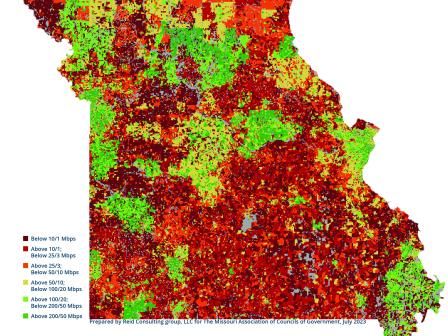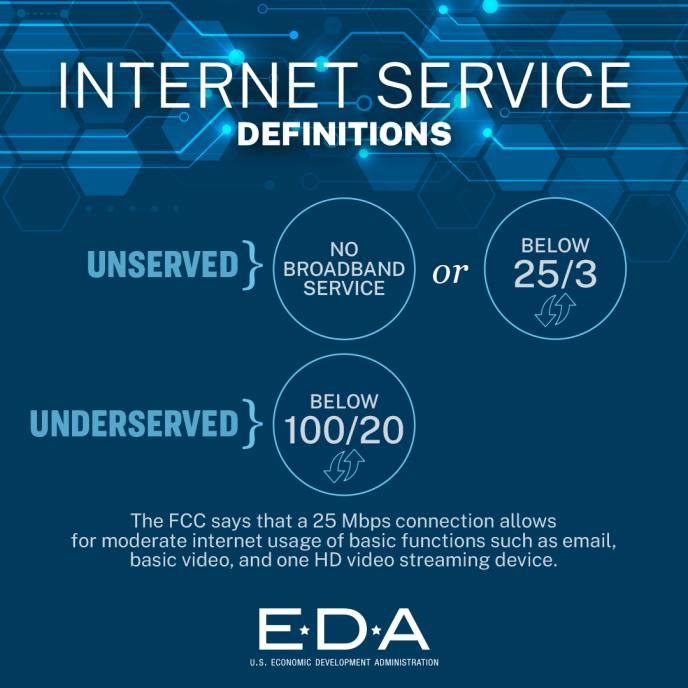
Archived Content
This site contains information that has been considered archived and will no longer be updated.
EDA Grant Lays Foundation for Significant Broadband Investments in Missouri
Lack of access to broadband is a problem for millions across the country, including residents in the state of Missouri. According to surveys from the Federal Communications Commission (FCC), the state ranks near the bottom for access to high-speed internet. Some local business owners had to find creative workarounds including completing tasks and then traveling into town to upload their completed work.
President Biden recently said, "For today's economy to work for everyone, internet access is just as important as electricity or water or other basic services.” Leaders in Missouri clearly agree.

Several years ago, state leaders looking to increase access for Missouri residents and businesses recognized the first step was to develop a plan and identify the areas in need. In September 2021, EDA awarded the Missouri Association of Councils of Government (MACOG) a $613,750 CARES Act investment to develop a statewide broadband feasibility study and technical assistance for broadband development. MACOG is a statewide association compromised of all 19 of Missouri’s regional planning commissions and councils of governments.
“This study is allowing us to identify areas of the state that are unserved or underserved in terms of broadband,” said MACOG Statewide Planning Coordinator Doug Hermes.
The Infrastructure Investment and Jobs Act (IIJA) describes unserved locations as ones without any broadband service, or with internet service offering speeds below 25/3 (25 Mbps for downloads and 3 Mbps). It defines an underserved location as one with broadband service offering speeds below 100/20. The FCC says that a 25 Mbps connection allows for moderate internet usage of basic functions such as email and basic video.
Results from the EDA-funded survey determined that many areas of Missouri have less access to adequate internet than previously thought. The survey, conducted by Reid Consulting Group, looked at a handful of areas to evaluate service provider coverage verses actual speed tests.
The analysis, research, and planning from this study are helping to create the foundation for funding to improve broadband service. “The work this project is doing and providing has been so helpful in identifying what the needs are in the state and how future investment is going to be beneficial,” Hermes said.
This EDA-funded project allows for the state to not only better understand the broadband challenges, but also better positions the state for other federal broadband grant opportunities, including additional planning grants.
Just this summer, the U.S. Department of Commerce’s National Telecommunications and Information Administration (NTIA) announced state allocations for its $42.45 billion Broadband Equity, Access, and Deployment (BEAD) program to expand high speed internet access across the country. The state of Missouri was allocated the third highest amount among all states, $1.7 billion.
Additional state and federal funds have also been targeted towards improving Missouri’s broadband access. “The state of Missouri is a step ahead in broadband planning and organization, thanks in part to this EDA investment. I think this study will continue to lead to some significant results,” Hermes said.
